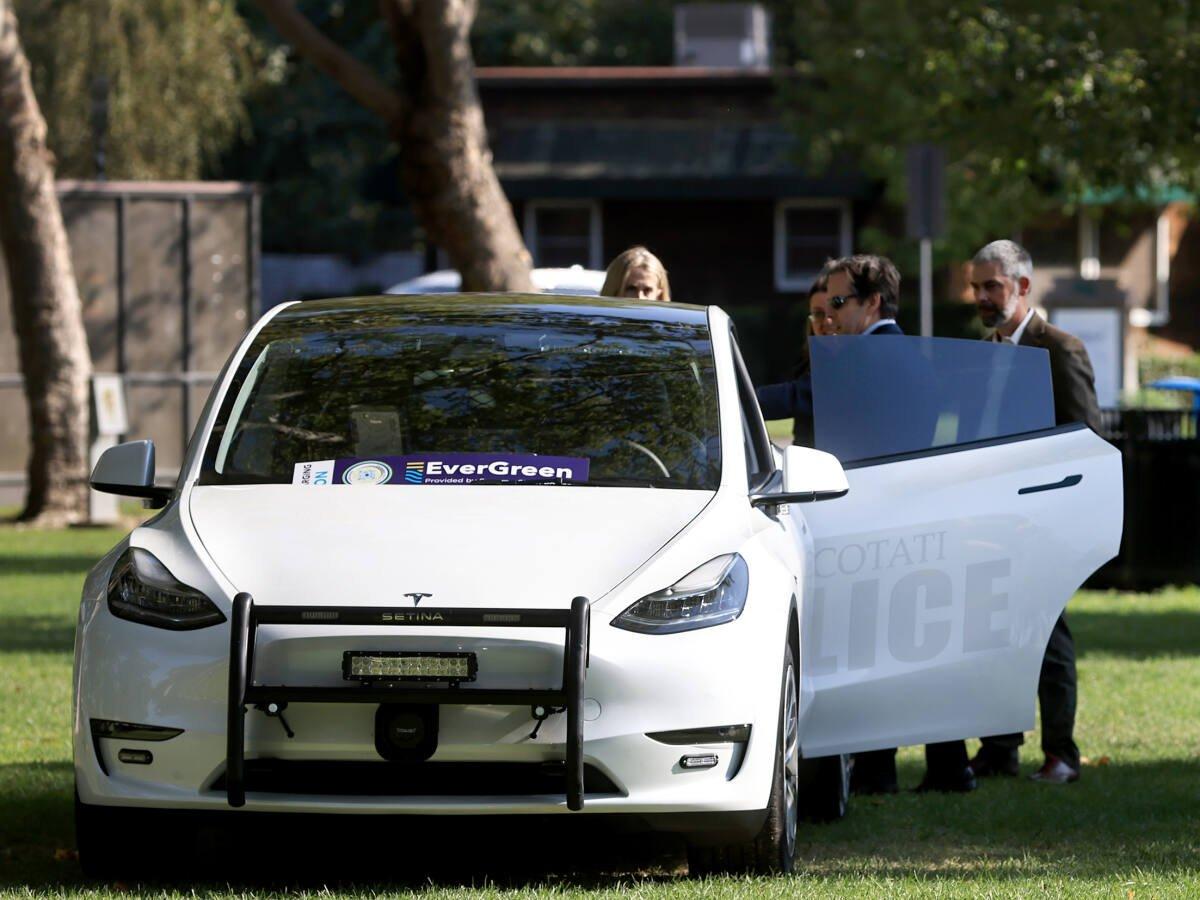courtesy// Kent Porter, Press democrat
Residents and Seawolves of Cotati might have noticed a new addition to the police force lately – a Tesla electric patrol car, which was unveiled by the Cotati Police Department late September in 2022. Cotati becomes the second city to utilize an electric vehicle, the first being Fremont. Its goal is to reduce greenhouse gas emissions.
An all-wheel drive Dodge Charger, used as their typical patrol car, costs about $35,000. The Tesla Y Model, now owned by the Cotati police department, was $80,000 along with the amenities needed.
In a statement released to The Community Voice, a website about the latest news in Sonoma County, City of Cotati Mayor Mark Landman said, “Our police fleet was an obvious place to prioritize, as the old vehicles idle and driven extensively, with an overall efficiency of nine miles per gallon. Even with the higher initial costs of purchasing the car, it’s less expensive overall with gas and maintenance savings. We are happy to help lead the way to a healthier gas-free future with electric patrol cars that refuel on electricity from Sonoma Clean Power Evergreen that saves our residents money over the life of the vehicle.”
According to the Press Democrat, Cotati officials acknowledge the Tesla’s higher price tag, however, they say that because the Tesla costs less to maintain, the difference in expense therefore evens out. The new electric patrol vehicle will be the Cotati Police Department’s 10th patrol unit. There are plans for more electric vehicles to be purchased as the existing cars are phased out.
There are also plans for Mendocino and Marin County to also acquire their own vehicle.
But it’s not just the police department that’s making strides towards sustainability. Sonoma State is also planning to expand their fleet with an electric vehicle of their own.
SSU Police Chief Nader Oweis said, “We are currently exploring electric vehicles for the Sonoma State Police Department, and even spoke with a manufacturer last week about what it would take in the future to utilize them as police vehicles.”
Oweis said that the department currently has a hybrid police vehicle in the fleet, and are analyzing the purchase of additional hybrids in the short term, until they are ready for fully electric vehicles. He acknowledged that there are infrastructure needs for charging stations, which is why the police department has begun to explore grants to fund their needs.
“Plus, with the new solar project about to start, we want to be mindful of how to integrate with this project too in order to maximize our sustainability efforts,” said Oweis. “Obviously, there is still some work to do before any final decisions are made, but our goal is to get to electrical vehicles in the next few years. And, this isn’t just for police vehicles but all vehicles owned by the University.”
Students such as second year Samantha Miravillo and Jenni Bazteriullo welcome the opportunity of an electric vehicle.
Miravillo said, “I think it’s a pretty cool idea for being sustainable. If they can somehow make the funds for it then I don’t see why it’d be a problem.”
Bazteriullo said that switching into electric cars would be worth it and a good investment, not only for the school but for the environment as well. “With the [recent] celebration of Earth Day, I think it’s definitely a good idea. Less gas, less costs, and less problems. More importantly, less pollution!”
Other students such as third year students Roy DePuente and Katalia Gomez agree that electric vehicles would help the environment, but are skeptical as to how the department would acquire it.
“As long as they purchase the vehicles honestly without touching student tuition, then sure, why not?” said DePuente. “Seeing those kinds of vehicles on campus would be pretty dope.”
Gomez said that seeing Teslas driving around campus would be ‘off-putting.’ “Don’t get me wrong, I think it’s neat wanting to switch to electric cars. If they ended up using Teslas though, it’d be pretty weird. Those are ridiculously expensive,” Gomez said.



































